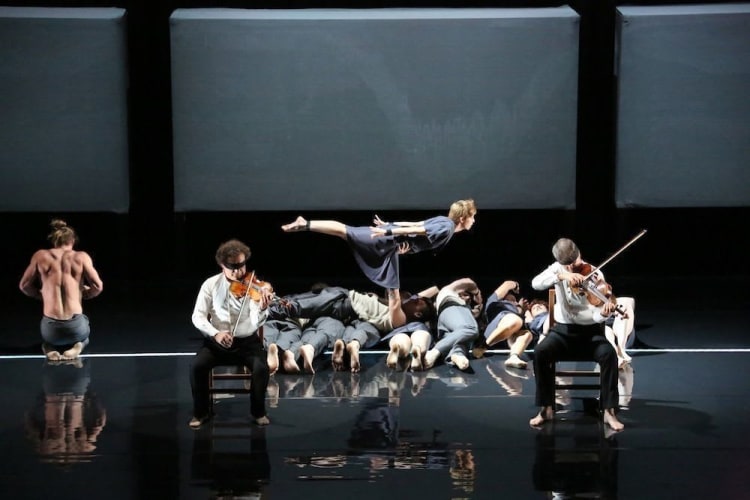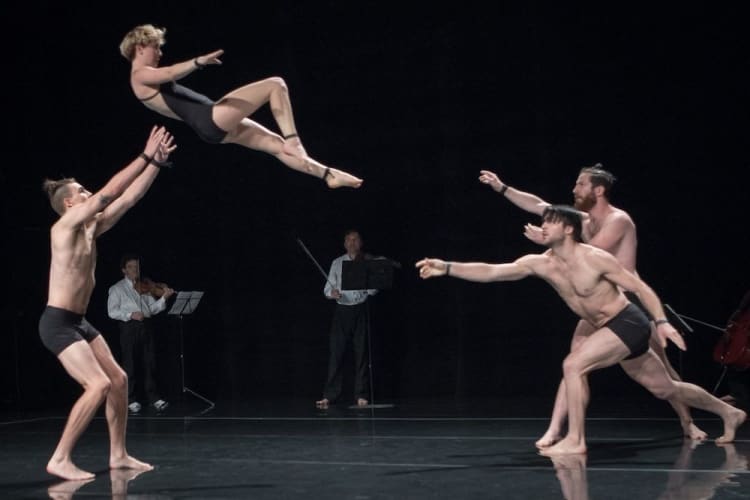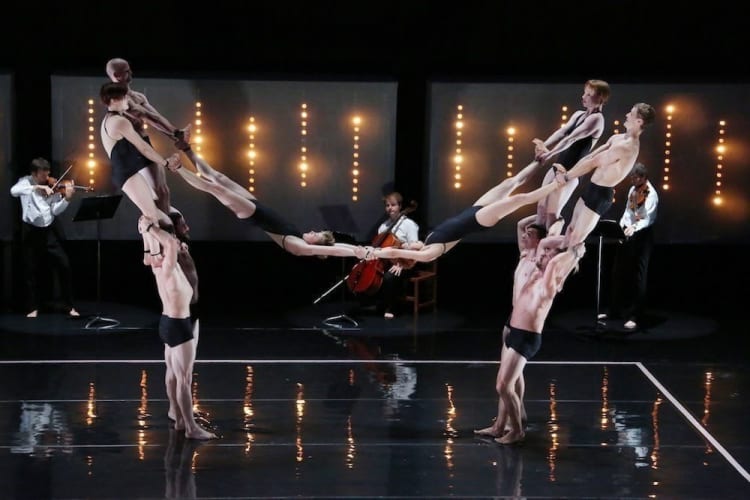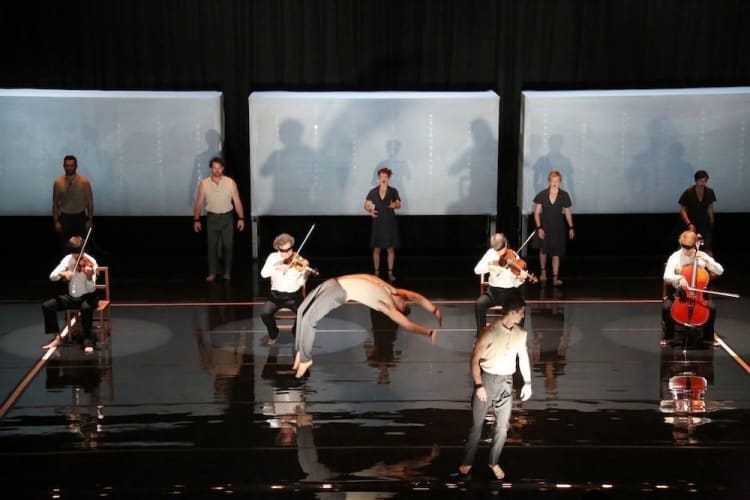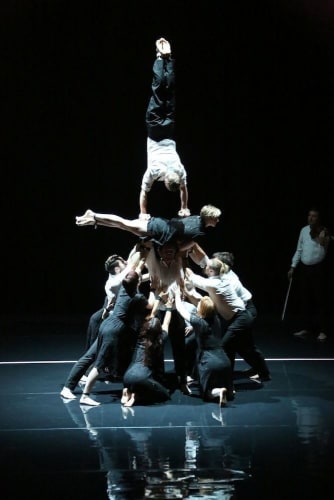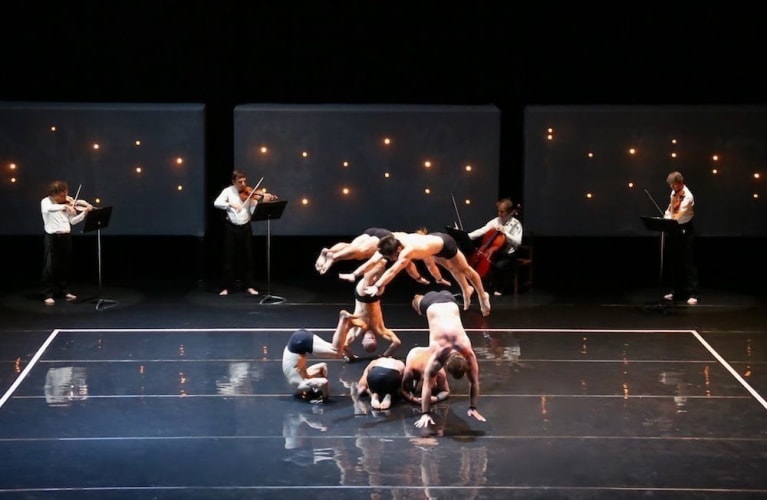Creator of Opus—with the fourteen-strong Circa ensemble and the Debussy String Quartet—Yaron Lifschitz talks of binary oppositions in the tensions between Shostakovich’s chamber music and the acrobatic troupe, and the millions of physical permutation possibilities.
It seems an incongruous fusion: Shostakovich and circus tricks, though circus was considered a major art form in Soviet Russia. Neither the music nor the acrobatics dominate in Opus, and it depends on one’s sensibilities which sense is overpowered the more, the aural or the visual.
Do they work in unison or is this melding too strenuous? The audience goes with the visual and applauds each increasingly amazing feat of the acrobats—in the middle of a musical phrase. For Shostakovich lovers this would be sacrilege.
For me it is inevitably Shostakovich’s music—its history, its tristesse, references, quotes, hidden clues—that gives metaphorical texture to the mass of humanity on the stage.
A lone dangling man, crucified between two bungy ropes, the contortions, the tying oneself in knots, the jumping through hoops, the balancing acts, the manipulation of bodies, the towers of strength, and above all, trust.
Tensions and torsions, hyperextensions and splits in mid-air, the acrobats are flying daredevils, strong, fast, and timing perfect—they have to be. Trapeze work, pyramids, hoola hoops, girls bearing muscle-bound men on their shoulders, girls flung and swung through the air.
All the time the Debussy Quartet walks, sits, huddles undeterred in the midst of the hurly burly of life, and plays beautifully. For a brief moment a Chagall painting comes to life, as Jewish melodies and folk songs sing out of the string quartets.
Jason Organ’s black and white designs, dark clouds, grainy photographic vistas, white streaks on black background, suggest to me twentieth century atrocities, as a soulful adagio plays in requiem for them.
Blindfolded, seated musicians perform undisturbed whilst circus acrobats, god’s acrobats, struggle against their turbulent fate, walk over their compatriots bodies, pontoon bridges, bodies used as logs.
But not all is harrowing sorrow in the string quartets (here 11, 8, 5 and Adagio): Shostakovich’s dry subversive wit is picked out as the ensemble moves towards the light, from minor to major, from artillery fire to rebirth.
Music’s landscape is transformed into visual magic, a billowing Philippe Genty moment, into collective dynamism, the tempo picks up: playtime on a wet look shiny black floor outlined in neon. Stripped to swimsuits and shorts, rocket bodies catapult through the air, turn somersaults, headlong dives, and girls are used as skipping ropes.
Jumping through hoops takes on new meaning when the hoops are made from human configurations. Tableaux, complex arches, audacious moves, no safety net, only one’s fellow strong men and women.
The heavy and the light, high and low art, Australian gymnastics and French finesse, respect and disrespect in the best possible sense, Yaron Lifschitz just about pulls it off. Shostakovich is not ‘illuminated’, but he is certainly ‘celebrated’ in a most peculiar way.
